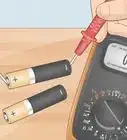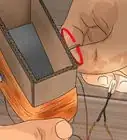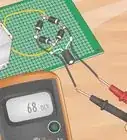X
wikiHow is a “wiki,” similar to Wikipedia, which means that many of our articles are co-written by multiple authors. To create this article, 12 people, some anonymous, worked to edit and improve it over time.
This article has been viewed 55,763 times.
Learn more...
Most people blow fuses by mistake when they run too much electrical current through an appliance or home circuit. However, you can do this on your own using a set of simple supplies. This can be a good way to teach how circuits, voltages, and amps work. Proceed with caution, as some fuses can explode when they are blown. Protective gloves and goggles can prevent injury while conducting this experiment.
Steps
Method 1
Method 1 of 2:
Part I: Assembling Your Materials
-
1Obtain a fuse. There are two main types of fuses: cylindrical and plug fuses. Cylindrical fuses consist of a ribbon of fusible metal enclosed in a ceramic or fiber cylinder. This type of fuse is usually used in appliances. Plug fuses are typically used to protect in home electrical wiring and consist of a metal strip through which current must flow. These are placed in an electric circuit so that current flows through the metal strip to complete the circuit. These typically have a window in the plug so you can see the condition of the metal strip. [1]
- If excess current flows through the fuse, the metal strip will heat to its melting point and break. This is what blows a fuse.[2]
- An ampere, or its abbreviation "amp", is a unit that is used to measure electrical current. Current can be defined as a count of the number of electrons running through a circuit. One amp is the amount of current produced by one volt. [3]
- The ampere rating of a fuse is based on the number of amps (i.e the amount of electrical current) a fuse can handle before it will blow.
-
2Obtain a power supply and wires. You should have a power-supply with an ampere-rating greater than your fuse ampere-rating. And lastly two wires that will connect the power-supply and the fuse. The ampere-rating of the wires should be greater or equal to power-supply ampere-rating.
- In order to blow a fuse, the number of amps produced from the power supply and wires must be greater than that of the fuse. When you want to blow a fuse you need to make sure that you are putting more amps through the fuse than it can handle.[4]
- A power supply can be a battery. Copper wires are good conductors of electricity. These, and most fuses, can be purchased from most hardware stores. Consult packaging for amperage ratings. [5]
Advertisement -
3Obtain and wear protective gear. Some fuses may explode, so you need to protect yourself from danger with protective gear.
- Wires may get hot when power supply runs through them. Also keep in mind that wires are conductors of electricity. In order to safely handle these, make sure you have gloves made of 100% rubber, as this is the only sure way to protect yourself from both the heat and electrical current of your wires. Rubber is an insulator from electric current.[6]
- It is also a good idea to wear protective goggles to shield your eyes from glass or plastic debris that might result from an exploded fuse.
Advertisement
Method 2
Method 2 of 2:
Part II: Connecting and Blowing the Fuse
-
1Connect the power supply to wires. In order to blow your fuse, you must create a complete circuit using the power supply, wires, and fuse.
- All power supplies, such as batteries, will have a positive and negative terminal. This is where you should connect your wires to your power source. [7]
- Place one wire on the negative terminal of your power supply.
- Place the other on the positive terminal of your power supply.
-
2Connect the wires to either end of the fuse. This will complete the circuit needed to run electric current through the fuse from the power supply.
- Make sure the wires are touching both the positive and negative ends of the terminal as well as both ends of the fuse. If there is not complete contact, the circuit is not complete and electricity cannot be conducted. [8]
-
3Do a safety check. Some fuses may explode, so it is an important safety step to make sure your gear is properly worn before turning on the power supply.
- You should not work near any flammable materials. Electric currents may produce a spark that can ignite flammable liquids and dry flammable objects.
-
4Turn on the power supply. The fuse should now blow. Proceed with caution.
- If your fuse does not blow, disconnect the power supply and check to see that your circuit is connected properly.[9] Check to make sure that the metal strip inside the fuse is intact. If it is not, the fuse is already broken and you should try a different fuse. [10] If you are using a battery as a power source, test to see that it is working properly.
Advertisement
Community Q&A
-
QuestionHow do I blow a fuse by plugging something into the outlet?
 Community AnswerOverload the circuit. The easiest way to do this is to plug a copious amount of string lights into an outlet.
Community AnswerOverload the circuit. The easiest way to do this is to plug a copious amount of string lights into an outlet. -
QuestionWhat does it mean if someone says you have a short fuse?
 DonaganTop AnswererIt means you're likely to "explode" quickly, that you're not as patient as you could be.
DonaganTop AnswererIt means you're likely to "explode" quickly, that you're not as patient as you could be.
Advertisement
Warnings
- Wires may heat-up so use the protective gloves.⧼thumbs_response⧽
- Keep away from flammable materials while conducting this experiment.⧼thumbs_response⧽
- These kinds of experiments may cause sparks, which are a fire hazard.⧼thumbs_response⧽
Advertisement
References
- ↑ http://fuseone.com/fuseology.aspx
- ↑ http://fuseone.com/fuseology.aspx
- ↑ http://www.qrg.northwestern.edu/projects/vss/docs/power/2-what-are-volts-amperes.html
- ↑ http://fuseone.com/fuseology.aspx
- ↑ http://www.allaboutcircuits.com/vol_6/chpt_2/3.html
- ↑ https://www.pseg.com/home/education_safety/safety/myths.jsp
- ↑ http://www.qrg.northwestern.edu/projects/vss/docs/power/2-how-do-batteries-work.html
- ↑ http://www.allaboutcircuits.com/vol_6/chpt_2/3.html
- ↑ http://www.allaboutcircuits.com/vol_6/chpt_2/3.html
About This Article
Advertisement

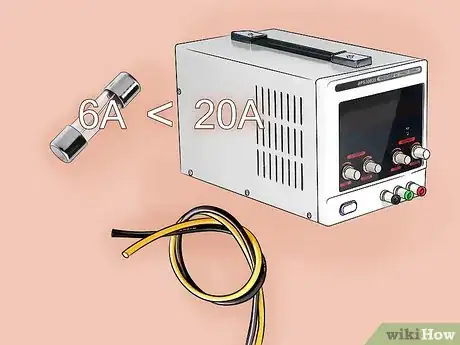

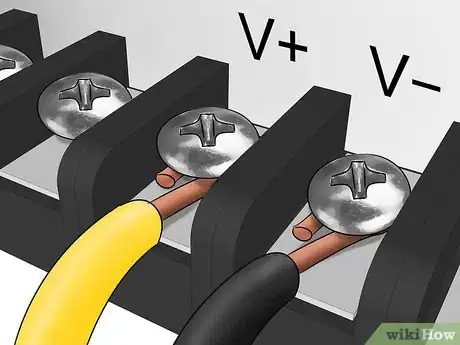
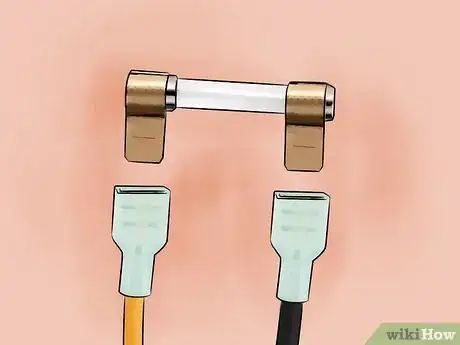
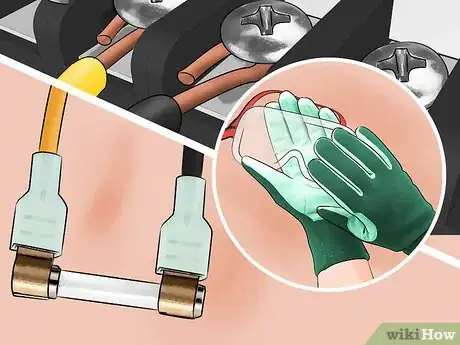

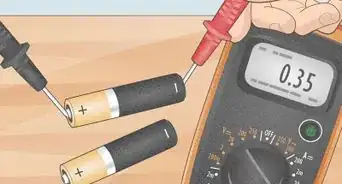

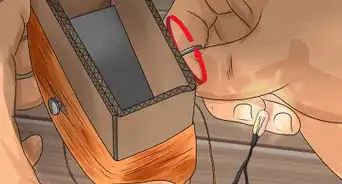
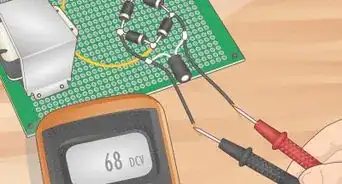







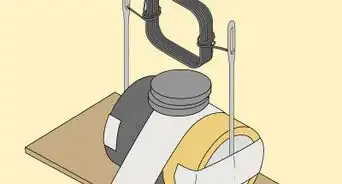
.webp)






